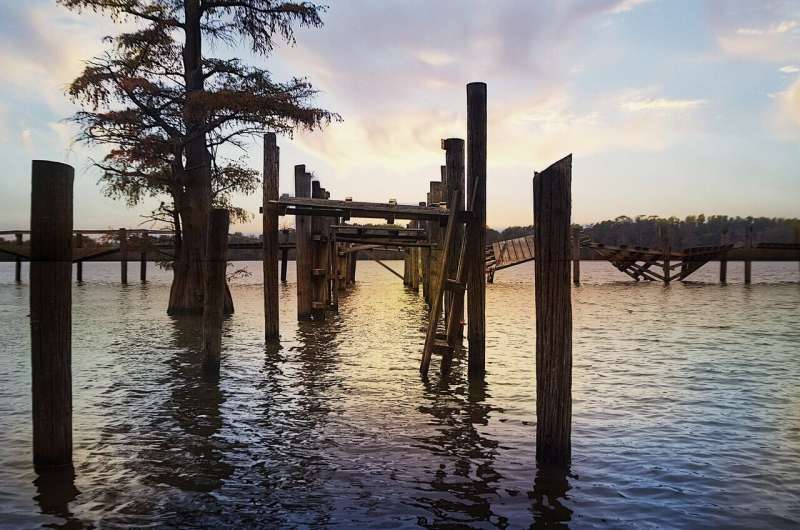Salt water creeps toward New Orleans up Mississippi River

Drought upriver has left the Mississippi River so low and slow that salt water is creeping farther than usual along the bottom toward New Orleans and threatening drinking water, the Army Corps of Engineers said Wednesday.
The Corps plans an underwater levee to block the wedge of heavier salt water before it can get into two of the four water treatment plants in Plaquemines Parish, south of New Orleans, officials said in a news conference posted on YouTube.
The structure, called a sill, could be as tall as 45 feet (13.7 meters), which would bring its top high enough to interfere with the extra-large ships the river was recently dredged to accommodate, said Heath Jones, the New Orleans Corps office’s emergency management director.
The Corps said deepening the river also lets the annual saltwater intrusion grow bigger and last longer, The Times-Picayune/The New Orleans Advocate reported.
Salt already in the river’s lowest stretch could affect the taste, smell and color of drinking water but is not a general health threat, the Plaquemines Parish government said in an advisory Wednesday. Sodium levels are above those recommended for drinking water for people on very low-sodium diets, so people on such diets or on dialysis should check with their doctors, it said.
Two reverse-osmosis machines should arrive Friday to remove salt from the water at the two treatment plants that are below the planned sill, parish President Kirk Lepine said at the Corps’ news conference.
He said those plants each process about 1 million gallons (3.8 million liters) a day, compared with 6 million gallons (22.7 million liters) a day at the main plant in Belle Chasse, just outside New Orleans’ west bank.
In August, scientists said the Gulf of Mexico “dead zone” where the water holds too little oxygen for marine life was smaller than expected because drought had made the river sluggish.
Drought farther up the Mississippi and its tributaries is why the river has remained so low, Corps spokesperson Matt Roe said in an email.
The river is deeper than the Gulf of Mexico almost to Natchez, Mississippi, and about every 10 years it becomes too slow to keep salt water away from the New Orleans area, Jones said.
When the river gets higher and stronger, he said, the current will both push back the salt water and push down the sill.
Jones said the structure will be about where a sill was created from dredged sediment in 2012. The bottom there didn’t need to be dredged for ships with hulls that can extend 50 feet (15.2 meters) below the surface, because it was already 90 feet (27.43 meters) feet below sea level, he said.
Previous sills were made in 1988 and 1999, the Corps said in a news release.
This year’s project, expected to cost about $10 million, should start in about three weeks and take about 15 days, finishing in early November, Jones said. It will be built in 5-foot increments; if the saltwater is blocked at a height below 45 feet, construction will end.
If it does reach 45 feet, the biggest ships could have to unload at least some of their cargo below New Orleans.
New Orleans’ levees face a hard test as storm bears down
© 2022 The Associated Press. All rights reserved. This material may not be published, broadcast, rewritten or redistributed without permission.
Citation:
Salt water creeps toward New Orleans up Mississippi River (2022, September 29)
retrieved 29 September 2022
from https://phys.org/news/2022-09-salt-orleans-mississippi-river.html
This document is subject to copyright. Apart from any fair dealing for the purpose of private study or research, no
part may be reproduced without the written permission. The content is provided for information purposes only.
For all the latest Science News Click Here
For the latest news and updates, follow us on Google News.

